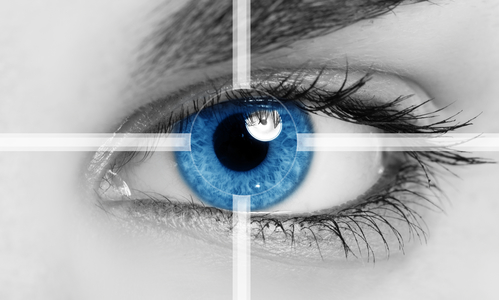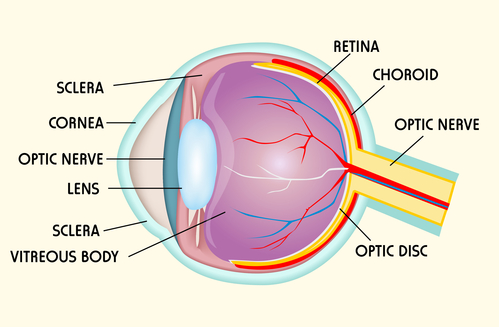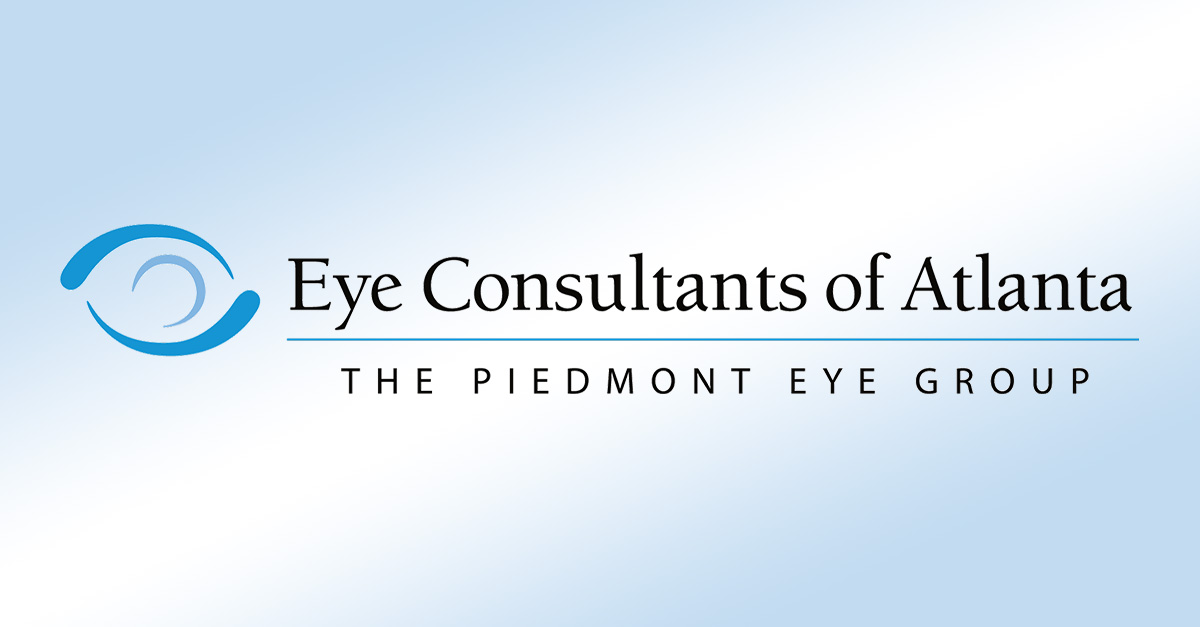Ophthalmology Through the Ages
As ophthalmologists, we are deeply interested in both the history and future of the practice of ophthalmology. It is a field with a long history that dates back to the earliest written history available – and which has made remarkable advances in recent years.

What is Ophthalmology?
Let’s start with a simple definition of ophthalmology. Ophthalmology is a medical specialty that focuses on the anatomy and physiology of the eye. Ophthalmologists have a deep understanding of the human eye. They can:
- Medically treat diseases of the eye
- Prescribe glasses or contact lenses for the purposes of correcting their patients’ vision
- Implement laser therapy
- Perform surgery on the eyes
Ophthalmologists also frequently participate in academic and medical research related to the diagnosis and treatments of disorders and diseases that affect the eyes.
In the United States, the American Academy of Ophthalmology, which has 32,000 members worldwide and is the world’s largest association of eye physicians and surgeons. The AAO:
- Sets educational standards for the study of ophthalmology
- Advocates for patients
- Informs the public about the practice of ophthalmology
Founded in 1896, the AAO takes its job seriously. In addition to the duties listed above, it also tracks ethical violations and provides public resources for those interested in learning about ophthalmology and eye diseases.
Subspecialties of Ophthalmology
As you might expect, the specialty of ophthalmology has several subspecialties that allow physicians to focus on special areas of concern. Here are some of the subspecialties that exist.
Cornea and External Disease
Specialists in cornea and external diseases of the eye focus on the diagnosis and treatment of diseases of the other areas of the eye, including the cornea, sclera, conjunctiva, and eyelids. These may include conjunctival and corneal tumors, corneal dystrophies, microbial infections, inflammatory processes. Some specialists in this area are trained in corneal surgery, including transplantation and surgery that corrects refractive errors.
Neuro-Ophthalmology
Vision and the nervous system are inextricably linked. The neuro-ophthalmology subspecialty looks at the relationships between neurological disorders and ophthalmic diseases. It also deals with pathologies affecting the optic nerve. Neuro-ophthalmology is most often practiced as a nonsurgical subspecialty, but some specialists combine it with a practice that involves surgery of the eye and orbit.
Glaucoma
Glaucoma is a common disorder of the eye that causes optic nerve damage due to increased intraocular pressure. A glaucoma specialist may also treat other disorders that cause optic nerve damage and will usually provide both medical and surgical treatment of the disease in question.
Pediatric Ophthalmology
Pediatric ophthalmologists spend most of their time in the medical and surgical treatment of eye disorders that affect young people. These may include:
- Strabismus
- Amblyopia
- Genetic abnormalities of the eye
- Developmental abnormalities of the eye
- Inflammation of the eye
- Trauma
- Ocular manifestations of systemic disorders
Some ophthalmic pediatricians treat infants while others focus on older patients.
Ophthalmic Plastic Surgery
Ophthalmic plastic surgery may be either reconstructive or aesthetic. Reconstructive plastic surgery focuses on repair of the eyelids, orbits and tear ducts. Aesthetic plastic surgery focuses primarily on the appearance, and not the function, of the eyes.
Vitreoretinal Diseases
Vitreoretinal diseases and diseases that affect the retina and vitreous. Specialists in this area treat manifestations of genetic, local, and systemic diseases as they affect these areas of the eye. These diseases are most typically diagnosed using ultrasound, fluorescein angiography, and electrophysiology. Common treatment methods of vitreoretinal diseases include cryotherapy, laser therapy, retinal detachment surgery, and vitrectomy.
Ophthalmic Pathology
Ophthalmic pathology is a specialty that requires training first in ophthalmology and second in pathology. Because the understanding of the eye is a specialty, an ophthalmic pathologist is usually the person who would examine tissue samples from the eye and adnexa when required.
The History of Ophthalmology
Reading about the subspecialties of ophthalmology, one might be tempted to think of the study of ophthalmology as a recent development. However, the earliest recordings of treatments for disorders of the eye date back thousands of years.
The first known written record of medical treatments of eye diseases come from the Ebers Papyrus from Egypt, which dates back to 1550 BCE.
The very earliest doctors (pre-Hippocrates) made diagnoses of the eye based on speculation, not empirical proof. Based on their observations, they concluded that the eye had outer and inner layers with fluid on the inside.
As we might expect from such early writings, the treatments for eye diseases and disorders were mostly herbal. Although the Egyptians did perform some simple surgeries, there was no information in the Ebers Papyrus to indicate they had performed eye dissections or had anything other than speculative knowledge of the eye’s structure.
Eye Diseases in Ayurvedic Medicine
Another early medical text that included extensive information about treating the eyes was the Sushruta Samhita, an Indian text that is considered one of the foundations of Ayurveda, or traditional Indian healing.
There is some debate over the date of the Sushruta Samhita. Some scholars attach it to the sixth century BCE, while others are more circumspect and will say only that it was written in the middle of the last millennium prior to the Christian era.
The word Sushruta is sometimes mentioned as the name of the physician who wrote it. In Sanskrit, it means “famous.” The Sushruta Samhita included, in total, descriptions of 1,120 illnesses and medical conditions. These included 67 ocular diseases and 51 surgical treatments.
The text also describes early surgical instruments. Modern ophthalmologists consider Sushruta to be the first cataract surgeon. The methods he described are similar to the primitive surgical treatment known as couching, which involved pushing the cloudy lens that is typical of cataracts to the bottom of the eye to clear the vision.
Greek Medicine and Dissection of the Eye
Many of the key advances that led to our understanding of the human eye and its structure can be dated to the ancient Greeks.
Aristotle famously dissected the eyes of animals and was the first to document three layers in the eye. He found that the consistency of the fluid inside the eyes explained the congealing that occurred after death.
Rufus of Ephesus, who lived in the first century AD, was the first to identify the conjunctiva. He also recognized that the eye had two chambers, with one chamber (from the cornea to the lens) filled with what he called water, and the chamber from the lens to the retina filled with a substance he compared to egg whites. Rufus also identified the epithelial layer.

A 2nd-century Greek physician, Galen, expanded on the work of his predecessors. He noted the curvature of the lens and cornea and the nature of the optic nerve, among other things. His model got closer to our modern models of the eye, and he also correctly identified the tear ducts.
The Precursors of Modern Ophthalmology
In the Middle Ages, lenses and microscopes were commonly used to examine the eye and learn about its structure. While the basic structure was known, there were still mysteries to be solved. Healers did not yet know why the pupils changed their size or what purpose the retina served.
In this period, many significant advances were made. They included:
- A surgeon named Georg Joseph Beer pioneered a surgical treatment, known as Beer’s operation, as a treatment for cataracts.
- King George III’s oculist, Baron Michael Johann Baptist de Wenzel, refined the technique for removing cataracts and legitimized surgery as a treatment for the condition.
- Ernst Abbe, a German physician and scientist, made huge advances in the field of ocular correction and is considered the father of modern optics. In addition to pioneering lenses for vision correction, he also revolutionized microscopic and telescopic lenses.
- Hermann von Helmholtz, a German physicist and physician, invented the ophthalmoscope and made the modern practice of ophthalmology possible.
The world’s first hospital dedicated to the treatment of the eyes was founded in London in 1805. It is Moorfields Eye Hospital, and it is still in operation today.
Modern Ophthalmological Advances
The modern practice of ophthalmology has its roots in the history of the specialty. However, those early practitioners of medicine would have no doubt marveled at the advances that have been made. Here is a small sampling of the modern advances that allow us to treat diseases of the eyes.
Corneal Transplantation
Vladimir Petrovich Filatov was a Ukrainian ophthalmologist who pioneered the use of tissue therapy to restore vision to those who had lost it. He used the tube flap grafting method and grafts from cadavers in his work.
Filatov attempted his first corneal transplantation in 1912, but the corneas grew opaque. He persisted and performed his first successful cornea transplant in 1931.
Retinal Surgery
Charles Schepens was a Belgian physician. He is considered to be the father of modern retinal surgery thanks to his work. He invented the binocular indirect ophthalmoscope.
Schepens moved to the United States in 1947 where he became a fellow at Harvard Medical School. He is credited with inventing the field of vitreo-retinal ophthalmology. He pioneered a treatment called scleral buckling for detached retinas. He founded The Retina Institute in 1950. It has since been renamed the Schepens Eye Research Institute and has affiliations with Harvard and Massachusetts General Hospital.
Ophthalmic Microsurgery
A Russian ophthalmologist named Svyatoslav Fyodorov is considered to be the father of ophthalmic microsurgery. Over the course of his career, he made several major advancements in the field.
The first happened in the 1960s when he began to use the intraocular lenses invented by Sir Harold Ridley. Fyodorov used the intraocular lenses to treat patients who had cataracts.
By 1973, he had invented a new surgical technique to cure glaucoma in its early stages. The surgery was called trabeculectomy. While the surgery itself has been modified over time, it is still the most commonly-performed surgery for glaucoma today.
Finally, Fyodorov developed the surgical procedure that he’s best known for, the radial keratotomy. It is used to change the shape of the cornea and cure myopia. He later founded the Fyodorov Eye Microsurgery Complex in Moscow.
Refractive Surgery
The first corneal transplant was performed in 1931, but the technique used to perform it has evolved. One of the most influential ophthalmologists in this area was a Spanish physician, José Ignacio Barraquer.
Barraquer had a prolific career. He developed the Barraquer Keratotome with pneumatic fixation, which improved the precision of cataract incisions. He published dozens of articles, including one that pioneered the use of air injection in the anterior chamber during cataract surgery. He pioneered the “edge to edge” suturing technique in corneal grafts, which is still used today.
LASIK Surgery
LASIK surgery is commonly used for permanent vision correction. It is based on the work of Dr. Barraquer, who first developed the microkeratome and keratomileusis techniques during his years in Colombia.

In 1980, a man named Rangaswamy Srinivasan, who was working for IBM, discovered that he could etch living tissue using an ultraviolet excimer laser, without doing thermal damage to the surrounding area. He called his phenomenon “ablative photo-decomposition” or APD.
The excimer laser was eventually used in radial keratotomy, which has developed in the LASIK procedure today. A Greek surgeon named Ioannis Pallikaris performed the first LASIK surgery in 1989. After that, he developed the Epi-LASIK technique, which eliminated some of the risks associated with LASIK surgery.
Requirements to Become an Ophthalmologist
Requirements to become an ophthalmologist vary from country to country. In the United States, it requires:
- Four years of undergraduate school
- Four years of medical school
- One year of general surgical residency
- Three years of ophthalmology residency
- One to two years of specialty training (optional)
Once certified as an ophthalmologist, physicians must complete required continuing education to maintain their licenses and certifications. Governing bodies such as the American Academy of Ophthalmology and the American Society of Cataract and Refractive Surgery offer continuing education programs, conferences, and political advocacy.
Conclusion
The field of ophthalmology is an exciting one, and it is constantly evolving. While today’s microsurgeries would seem like magic to early physicians, we do not doubt that the same would be true of modern ophthalmologists if we could see into the future.

